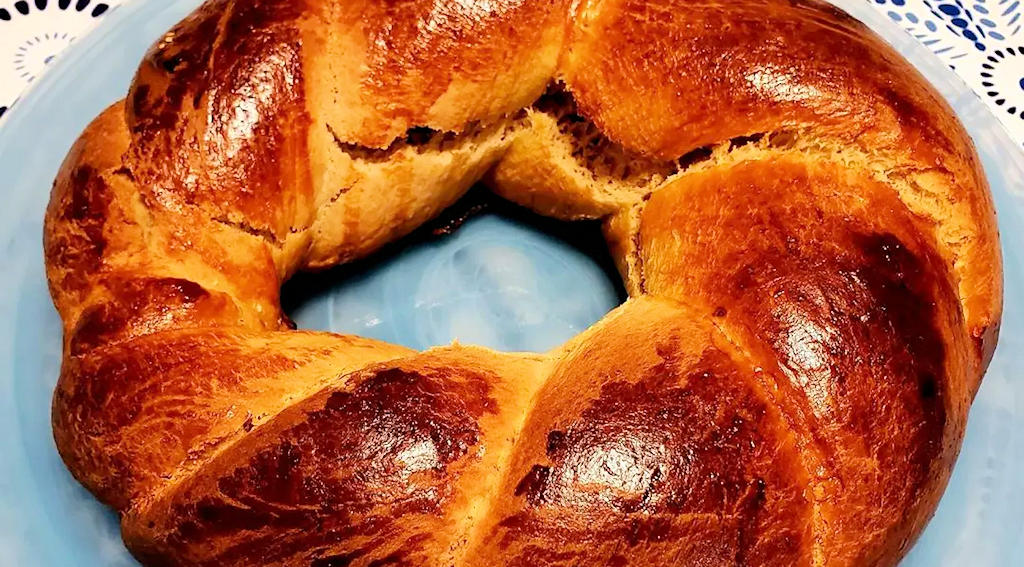While the exact origin of the Regueifa da Páscoa remains uncertain, its roots are believed to have been influenced by the Jewish challah bread, which shares the braided form and occasional use of eggs. The Jewish community that resided in Portugal before the 15th century likely introduced this bread to the local populace, who then adapted it to their own tastes and traditions. Historians also speculate that the bread may have drawn inspiration from the ancient Roman panis quadratus, a round bread divided into four parts and offered as an offering to the gods.
The distinctive shape and ingredients of the Regueifa da Páscoa bear significant symbolism and interpretation. The circular shape represents the cycle of life, the resurrection of Christ, and the unity of the family. The eggs, often dyed with natural hues or adorned with colorful wrappings, symbolize fertility, life, and rebirth. The sprinkle of sugar atop the bread signifies sweetness and joy, while the addition of lemon zest and port wine infuses a refreshing and flavorful touch.
Although the Regueifa da Páscoa is a beloved tradition throughout Portugal, it hails primarily from the northern regions, particularly Minho and Douro Litoral. Its popularity extends even across the border to parts of Galicia, Spain, where it is known as the rosca de Pascua. Each region boasts its unique variations and recipes for the Regueifa da Páscoa, but the fundamental ingredients include flour, yeast, eggs, sugar, butter, lemon zest, and port wine. Some recipes incorporate additional elements such as milk, cinnamon, aniseed, or almonds, lending their own regional flair.
Lisbon.vip Recommends
Beyond its delectable nature, the Regueifa da Páscoa embodies a cherished tradition passed down through generations in Portugal. It serves as a medium for celebrating Easter while paying homage to the ancestors who created this revered recipe. More than that, it is an expression of love and gratitude shared among family and friends on Easter Sunday. The Regueifa da Páscoa becomes a poignant symbol of faith, hope, and joy, serving as a reminder of the profound connections we hold dear in Portugal, and especially in the vibrant city of Lisbon.
As you wander through the charming streets of Lisbon, exploring its rich history and immersing yourself in its vibrant culture, be sure to savor the essence of Easter by indulging in the captivating flavors of the Regueifa da Páscoa. Allow this traditional delicacy to transport you to a realm where faith, family, and joy intertwine, embracing the spirit of Easter in a truly Portuguese fashion.



